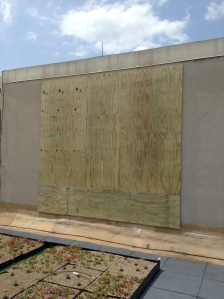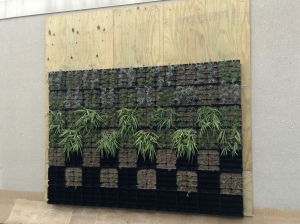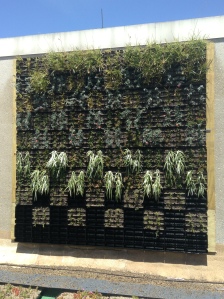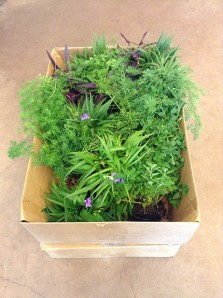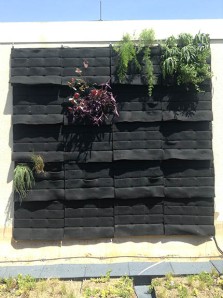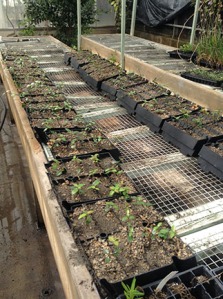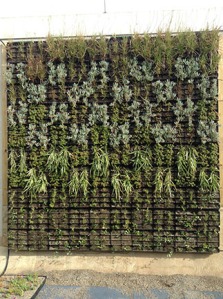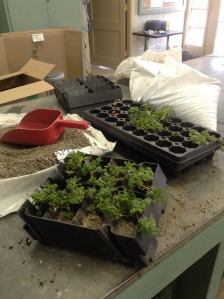by Juan Carlos Vela, Graduate Student, Urban Planning, April 24 to May 8, 2013
After planting all the modules, we proceeded to construct the living wall on the rooftop of the Langford architecture building. These modules did not include those designated for the Asian Jasmine plants since they were not yet fully established. On the first day, we managed to mount the plywood boards onto the concrete wall, but not without some challenges along the way. We were very fortunate to have the aid of Jim, the wood shop supervisor, who provided most of the tools used for mounting the plywood. We spent the following weeks mounting the aluminum strips and plant modules onto the plywood structure we had made and ended up finishing the wall a day before the end of the semester. Due to time constraints; however, we were unable to install the irrigation system and frame as planned. This will likely be addressed over the summer, but in the meantime, the wall will be kept hydrated by having someone spray it with water as needed. In the end, we were lucky to have such a great team of students who were more than willing to assist with the various stages of this project. Without our teamwork and the guidance of our instructors, this project would not have been possible. Furthermore, the experiences I’ve gained through this project should prove most useful in my final studies regarding the relationship between urban green infrastructure and active/healthy living. These experiences will also help in developing strategies for promoting and implementing these type of systems within urban areas and future developments.
—Juan Carlos Vela
